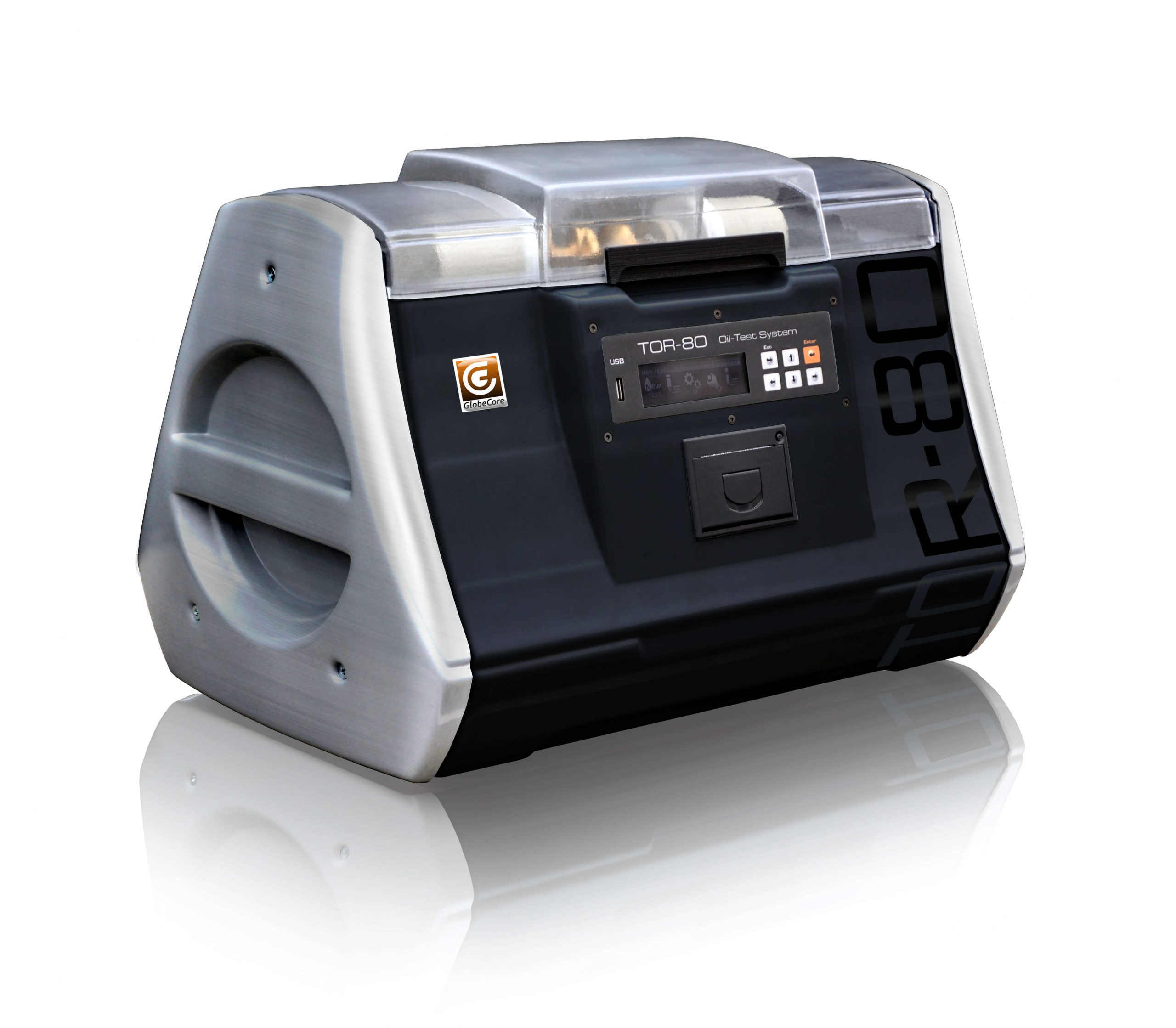Dielectric breakdown measurement is performed in order to assess how well the oil is ready to insulate the live parts of a transformer. Instruments for measuring this parameter should be available in every electrical laboratory. In this article, we will discuss brief theoretical information about transformer oil breakdown voltage and how this voltage is determined.
Physical essence of transformer oil breakdown voltage
Depending on the ability to transmit electric current, electrical materials are classified into three groups: conductors, semiconductors, and dielectrics. Dielectrics do not transmit electric current; therefore, they are used in electrical equipment for insulation. Most modern transformers use transformer oil as a liquid dielectric.
When a transformer operates, the oil has to work in harsh conditions characterized by high temperatures and voltages. The better the oil copes with such loads, the more reliable the transformer operation is. However, there occurs an oil breakdown at a certain voltage.
The physical essence of this phenomenon is all about the fact that the internal resistance of a dielectric drops to zero at this moment and it begins to conduct electric current; in other words, it turns into a conductor and ceases to perform its initial function. This increases the risk of a short circuit and serious failures in the transformer; therefore, it is necessary to carry out dielectric breakdown measurement on a periodic basis and to avoid using the dielectrics with a low value of this parameter.
Breakdown voltage requirements for electrical devices
The breakdown voltage value is normalized by applicable standards and may differ depending on the category of electrical equipment. The breakdown voltage shall not be less than 25 kV in electrical equipment with the voltage of up to 15 kV after filling. If the equipment belongs to the voltage class from 220 to 500 kV, then the breakdown voltage of oil after filling shall be at least 60 kV. Dielectric breakdown measurement is carried out before oil filling and during the equipment operation.
What factors affect the value of transformer oil breakdown voltage?
The main factor in reducing the breakdown voltage of transformer oil is an increase in moisture content. With an increase in the moisture content of dry oil to 0.02%, the breakdown voltage decreases from 20 to 4 kV. In practice, the oil becomes contaminated not only with water, but also with fibrous particles of solid insulation the effect of which further reduces the breakdown voltage.
How to measure dielectric breakdown
The procedure of dielectric breakdown measurement is specified in the standards, so it may differ from country to country. However, in general terms, the test algorithm is the same.
In order to measure the breakdown voltage, a high-voltage transformer is used with a gradual voltage step-up on the secondary winding thereof.
The voltage step-up goes from zero to maximum value, or to a value at which a breakdown of the oil channel between the electrodes will occur. Typically, several measurements are made in a row with an interval of several minutes after which the final value of breakdown voltage is calculated using the formula.
Depending on the standard applied, the shape of utilized electrodes, the distance between the electrodes, the time between adjacent measurements, etc. may differ.
Instruments for liquid dielectric breakdown measurement
Special laboratory instruments are normally used for dielectric breakdown measurement. One of these instruments has been developed by GlobeCore and is called TOR-80. Why are we speaking about it? Let’s explain now.
When a breakdown occurs, the disconnection rate of testing voltage serves as an important parameter of any instrument. It is important in terms of both safety and measurement reliability. For TOR-80 instrument, this parameter is equal to 4 microseconds. This is absolutely the best indicator among all the instruments of similar purpose in the world market. In 4 microseconds, the oil used for testing will not have time to burn underneath and to change its chemical composition. In terms of other parameters and characteristics, GlobeCore instrument is not inferior to comparables.
It is a compact laboratory instrument with integrated handles. Using these handles, the instrument can be easily carried from one room to another or moved through the laboratory.
One of the main advantages of TOR-80 is its versatility. The instrument can be used to test transformer oil according to any of the existing standards.
If a standard has been altered, the user can also make adjustments to the testing program and further test the oil according to the current algorithm. Besides, the instrument can be used to measure the breakdown voltage of liquid dielectrics of various origins: petroleum-based, vegetable oil-based, and artificially obtained.
All measurements are performed in automatic mode, and the error does not exceed 1%. This precision is achieved through the use of GlobeCore technologies and the introduction of new standards in the industry of laboratory instruments for transformer oil testing.
Furthermore, TOR-80 instrument is easy and convenient to operate. The results of dielectric breakdown measurement can be printed out using an integrated thermal printer. All results are stored in the non-volatile memory of the instrument and can be transferred to a computer either using a USB flash drive, or by connecting the instrument to the computer via a cable.
If the operating rules are followed, TOR-80 is completely safe for laboratory staff. In particular, monitoring the lid position is provided. If the lid is open, the testing voltage application is disconnected, so an electric shock is prevented.
Please contact us using some of the contact details contained in the appropriate website section, and we will send you a full technical description and all the specifications of TOR-80 instrument, as well as answer any questions if they arise.





